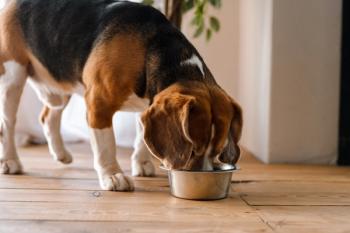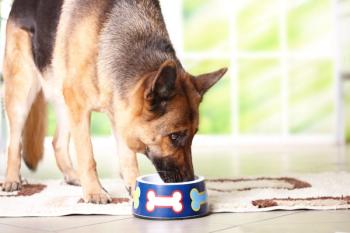
The perks of proactive feeding
Dr. Laura Smallwood has advice on the importance of nutritional intervention and how to get clients on-board.
Why should general practitioners be proactive in initiating assisted enteral feeding?
Numerous articles have documented the benefits of early nutritional intervention in anorectic dogs and cats. Enteral feeding is recommended over parenteral nutrition in all cases in which the gut is functional because enterocyte atrophy occurs when enterocytes are deprived of luminal nutrition, and the effects can be multisystemic.1 Early intervention can be especially important in cats because cats often have a history of inadequate protein and calorie intake that significantly precedes owner awareness of poor or absent appetite-particularly in multicat households.
Dr. Laura J. Smallwood
If you are a veterinarian who is not using enteral feeding, I think your first step toward making nutritional support a standard therapy for anorectic patients is to learn the technique for midcervical esophageal feeding tube placement.
Esophagostomy feeding tubes have gained popularity over the past 15 years to become the preferred feeding tube for dogs and cats with normal esophageal function. Compared with gastrostomy tubes, which require specialized equipment and can be complicated to place, esophageal feeding tube placement is a simple surgical procedure (so simple that a surgically challenged internist can do it) and requires only brief anesthesia and minimal surgical equipment and supplies.
I have found esophagostomy tubes to be easy to place, well-tolerated by most of my patients, and associated with minimal, if any, complications; retrospective studies support this experience.2-4 They are easily managed in the home environment and, for cat owners, carry the added benefit of providing an easy way to give oral medication.
What works for getting clients to accept feeding tube placement?
When I recommend placing a feeding tube as part of a patient's initial treatment plan, owner compliance increases. Drawing on years of experience with esophagostomy feeding tubes, I can confidently tell pet owners that most patients tolerate them very well, that significant complications are uncommon, and that enteral nutrition using a feeding tube can significantly impact the odds of recovery and survival in an anorectic patient.
I assure pet owners that I would not recommend a feeding tube for a pet that is suffering with an untreatable condition but would always recommend one for a pet with a potentially treatable condition that awaits diagnosis. If an anorectic patient requires anesthesia for diagnostic testing or other procedures, I always suggest that we take advantage of an already necessary anesthetic episode to place a feeding tube.
Most pet owners are highly concerned when their pets are not eating, and I find that providing them the opportunity to provide nutritional support in the home environment is typically well-received. Many pet owners are especially receptive when made aware that the feeding tube will also allow them to easily administer necessary medications.
Laura J. Smallwood, DVM, DACVIM (small animal internal medicine)
Saint Francis Veterinary Specialists
625 Dekalb Industrial Way, Suite 500
Decatur, GA 30033
REFERENCES
1. Sanderson S, Bartges JW. Management of anorexia. In: Bonagura JD, ed. Kirk's current veterinary therapy XIII: small animal practice. Philadelphia, Pa: W.B. Saunders, 2000;69-74.
2. Levine PB, Smallwood LJ, Buback JL. Esophagostomy tubes as a method of nutritional management in cats: a retrospective study. J Am Anim Hosp Assoc 1997;33(5):405-410.
3. Crowe DT Jr, Devey JJ. Esophagostomy tubes for feeding and decompression: clinical experience in 29 small animal patients. J Am Anim Hosp Assoc 1997;33(5):393-403.
4. Devitt CM, Seim HB 3rd. Clinical evaluation of tube esophagostomy in small animals. J Am Anim Hosp Assoc 1997;33(1):55-60.
Newsletter
From exam room tips to practice management insights, get trusted veterinary news delivered straight to your inbox—subscribe to dvm360.



